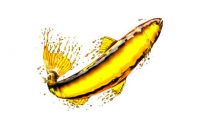What Is Fractional Distillation?
Fractional distillation separates mixtures into component products in a single distillation column. It involves heating a mixture to vaporize it, and forcing it through the column, where various products will condense and precipitate out in response to temperature changes. This technique is widely used in industrial chemistry for the processing of products like crude oil and air. The method can also be applied in experimental settings to distill samples of interest.
The process of fractional distillation can be used in any setting where a mixture includes a blend of components with similar, but not identical, vapor points. Conventional distillation may not be adequate to the needs of such mixtures, or could require multiple passes to extract the desired components. With mixtures of unknown makeup, a chemist can perform some simple tests on a sample to determine what it contains and decide how to separate it. The best option can depend on how the sample will be used.
Equipment heats the mixture during fractional distillation, causing it to boil and throw off vapor. The vapor rises through a column lined with trays. As it cools, it condenses, and each tray captures a different condensate. Materials that condense at relatively high temperatures drop out first. As the mixture grows steadily cooler, other compounds condense, until it hits the top of the column. The system can drain each tray separately to capture the distillates. This allows for recovery of all useful components in the mixture.
The type of required equipment can vary in size and composition, depending on what kinds of materials are being processed. Facilities like oil refineries need to recover as much as possible from each barrel of oil, and have extensive distillation facilities capable of handling very high volumes of material. In a lab setting, the equipment may be relatively small, as the samples are usually not very large. A desktop fractional distillation unit may be an option for some lab settings.
Students in chemistry classes may learn about fractional distillation and have an opportunity to practice it in a lab setting. The technology is used in a wide variety of industries, and chemists may go on to specialize in distillation techniques used with particular materials. Petroleum chemists, for example, study this process as well as techniques like cracking to break up hydrocarbon chains in crude oil. Cracking can be used to change the chemical composition of oil to extract more useful components.


